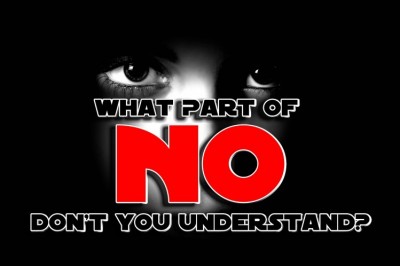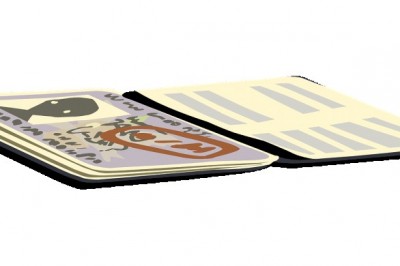Guitar Chord Theory Explained – Hang-in There It’s A Long Story
The Notes.
When we count we go from1 to 10 and repeat that pattern of 10 by going from11 to 20, and 21 - 3 and so on. In music we use the alphabet instead of numbers and it is A B C D E F G (7 notes) and repeat with A B C D E F G A and so on. However we tend to talk in 8 note structures in music i.e. A B C D E F G A so we are back to the starting note this give us the 8 notes. This is called an octave, the oct part being Latin i.e. eight think; octopus, octagon and we will pass over the month of October as an anomaly. So we have an 8 note pattern that is called an octave and abbreviated to 8ve.
An 8ve can start on any note, all it has to do is progress through the musical alphabet and finish on the note it starts on. An 8ve can go from B to B i.e. B C D E F G A B or from C to C....C D E F G A B C.
Chords are made from notes taken from a scale. If we take those notes and play them together we have a chord. Some notes sound better together than others and the 1st, 3rd & 5th notes (also called degrees) of the scale are used as the building blocks of all other chords and the 1st 3rd & 5th degrees are called a major chord because of its importance. Sometimes other notes are added into the mix, taken out or altered and in order to understand this we need to look at Steps and Half-Steps (Nth America) also called Tones and Semi-Tones (mostly the rest of the world).
Steps and Half-Steps (Tones & SemiTones).
On a guitar a Half-Step is the same as moving up or down from one fret to the next on the same string. A Step is equal to two frets up or down. A scale has a set order of half-steps and steps and regardless of which note you start form the pattern goes the first note then Step-Step-Half Step-Step-Step-Step-Half Step which places us back on the first note the 8ve. We can thank that ancient Greek mathematician dude Pythagoras for dividing an 8ve into this pattern, he played with a string fixed at each end and divided it into sections according to the harmonics and overtones that the string produced - heavy.
Using the C scale we have; C to D is a step, D to E is a step, E - F is a half-step, F - G is a step, G - A is a step, A to B is a step and B - C (8ve) is a half-step. E to F and B to C are half-steps, all the rest are steps. So you can work your way up and down the guitar neck and figure out a scale the name of the scale is taken from the first note. Im sure youre wondering about the half-steps that are on the fret in-between the steps. These are the Sharps and Flats using the symbols # (sharp, greater than) and b (flat, less than). For example; the C scale; C to D is a step and in-between is C# (C sharp), D to E is a step and in-between is D# (D sharp), F# is between F & G, G# is between G & A, A# is between A & B. That takes care of the sharps. Some scales have sharps in them and some have flats and C is the only scale that has neither. When the scales have flats the note between C & D is named Db (D flat), the note between D & E is Eb and so on. This tells us that the in-between notes can be a sharp or a flat depending on the scale, i.e. between C & D the note can be either C# or Db. This applies to all other notes that are a step apart.
If we work up the notes on the 6th - E string the notes/frets would run; E - F - F#/Gb - G -G#/Ab - A - A#/Bb - B - C - C#/Db - D - D#/Eb - E which is the 8ve on the 12 fret, the pattern then starts again with the next 8ve.
There are many versions of each chord however they are broken into two main groups; Major and Minor chords.
Major Chords
Major chords are made up from particular notes from a scale and a Major scale uses the 1st 3rd and 5th degrees. When we strum a chord that has six strings (notes) we may have 3 of the 1st note, 1 of the 3rd note and 2 of the 5th note, however we still only have the 1st 3rd & 5th notes. For example; Scale of C; C D E F G A B C and the 1 3 5 notes are C E G, this is a C Major chord. We dont usually say the Major part so a C Major chord is usually just spoken as C.
Minor Chords
The only difference between a major and a minor is the 3rd degree, it is lowered a half-step. E is the 3rd degree of the C scale so it would become Eb. Cm (C minor) would then use the 1st b3rd 5th degrees of the scale. This would give us C Eb G as the Cm chord.
The next bit to understand is chords that have a 7 in them. If we look at the C scale again then we see that B is the 7th and you would be correct to think OK we add the B into the chord. Well, guitarists being a strange breed will place a b7 into the chord instead of the 7, so B would become Bb. All 7 chords would read 1 3 5 b7. However when we speak or write the chord we do not mention the b we would say and write C7 or G 7. Now to confuse even more there is a chord called a major 7 e.g. Cmaj7 and in this chord we use the true 7th degree, so Cmaj7 reads 1 3 5 7 as would all other maj7 chords. To re-cap; any 7 chord - 1 3 5 b7 and any major7 chord - 1 3 5 7. That part is the worst of it.
If you are interested in the reasoning behind this it is.....technically speaking when we lower the 7th degree of a scale by a half-step the 7 becomes a minor 7 and would be written as Cm7 in a however as a guitarist we would understand the minor to be the b3rd and the 7 to be the b7 so Cm7 to a guitarist would be 1 b3 5 b7 when we should be using 1 3 5 b7 which is C7. Also we cannot write Cb7 as it looks as the b refers to the C and not the 7 so we would have a Cb chord with a 7 added into it so through necessity guitarists say and write it a 7.
Chords with 11 13 15 in them.
If we link two scales one after the other we have 16 notes rather than 8 so 11 13 15 chords have a note from the next 8ve added into them. Please note here that once we get into the second 8ve all chords need to also have the b7 in them. C11 would read 1 3 5 b7 11, and C13 would be 1 3 5 b7 13. Youre probably thinking at this point that there arent enough fingers for the job. We can omit other degrees from the mix. The 5th can be left out and if need be the 1st can also go. The 3rd must remain so we know which group (major or minor) the chord belongs to.
Slash Chords
e.g. C/G The first entry C is the chord and the G refers to the bass note that is in the bottom of the chord. C/G would read G C E G i.e. a C chord with G in the bass. All notes after the / refer to a note that needs to be in the bass of the chord. Other examples; Am/E puts an E note in the bas of the chord, D7/F# puts an F# note in the bass of a D7 chord.
Below is a list of chords showing the degrees of the scale.
Major - 1 3 5
Minor - 1 b3 5
7 - 1 3 5 b7
Minor 7 - 1 b3 5 b7
6 - 1 3 5 6
Minor 6 - 1 b3 5 6
9 - 1 3 5 b7 9
Minor 9 - 1 b3 5 b7 9
11 - 1 3 5 b7 11
Minor 11 - 1 b3 5 b7 11
13 - 1 3 5 b7 13
Minor 13 - 1 b3 5 b7 13
Major 7 - 1 3 5 7
Augmented - 1 3 #5
+9 - 1 3 5 9
sus2 - 1 2 5
sus4 - 1 4 (5)
½ Diminished - 1 b3 b5 b7
Diminished - 1 b3 b5 bb7
Chords and examples of how they are written.
DMajor - D
CMinor - Cm
E7 - E7
CMaj7- CMaj7
AMinor7 - Am7
F9 - F9
Gadd9 - G+9 or Gadd9
A11 - A11 or Am11
Bb13 - Bb13
CDiminished - C0 or Cdim
D½ Diminished - D or D½ dim
F#sus2 - F#sus2
Asus4 - Asus4
DAugmented - D+ or Daug5
www.nofretguitarlessons.com.au




























